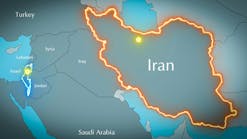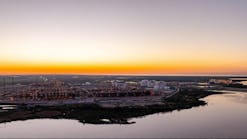Compared to its neighbor to the south, Canada is in the early stages of developing its unconventional resources, especially tight oil. For Canadian producers, this means that a large portion of that nation's production potential has yet to be unlocked. In watching the development of these emerging shale plays, it is generally acknowledged that it is crucial that only the most lucrative liquids-rich plays be developed.
Tight oil is expected to play an increasing role in Canada's overall production mix. The identified liquids-rich plays in the Western Canada Sedimentary Basin have become increasingly relevant due to new horizontal drilling and hydraulic fracturing and completion technologies employed in the development of these unconventional plays, which has made production economic – at least as long as oil prices remain high.
The Duvernay formation in Alberta, which has been compared to the Eagle Ford shale play in South Texas, has drawn the most intense focus to date. In evaluating well results in the Duvernay, Wood Mackenzie's research analysts noted the play has the potential to become one of North America's most attractive liquids-rich shale plays. Still in its infancy in terms of development, the Duvernay is a large play that covers much of west-central Alberta. Because of its potential, it has attracted companies like Encana, Talisman, Chevron, and ExxonMobil that already hold large acreage positions.
Here is a brief description of several other prominent and emerging plays in Canada and the latest news from each:
Liard Basin (British Columbia) – Apache has called the Liard the "best and highest quality shale gas reservoir in North America." It is located in a remote and largely unexplored part of northeastern British Columbia. Apache says its Laird Basin wells are the most prolific in the world, based on the volume of gas three test wells are producing. Based on the production from those wells, Apache announced it has 48 tcf of marketable gas within its Liard Basin properties. By way of comparison, all companies active in the Horn River Basin, one of three other major shale gas basins in the province, have marketable gas of 78 tcf, giving one company alone a natural gas find that is two-thirds the size of the entire Horn Basin. One well alone produced 21 million cubic feet of gas a day over a 30-day test period.
Horn River Basin (British Columbia) – Gas is produced from the siliceous shale of the Horn River formation in the Greater Sierra field, north of Fort Nelson. Horizontal drilling and fracturing techniques are used to extract the gas from the low-permeability shales. The original gas-in-place volumes are estimated to be up to 500 tcf, making it the third-largest North American natural gas accumulation discovered prior to 2010. Companies operating in the region include Encana, Apache, EOG, Stone Mountain Resources, ExxonMobil, Quicksilver Resources, Nexen, and Devon Energy.
Montney (Alberta and British Columbia) – Gas is produced from the Montney formation in the Peace River country in British Columbia and Alberta, and oil is produced from the formation in northern Alberta. Gas rich silty shales occur in the northern and western fringes of the deposit. Investor interest in the Montney has surged due in part to a reduction in royalty rates by the provincial government of Alberta. More than 25 E&P companies are operating in the area, and strong developmental growth in the shale has rewarded leading producers such as Encana with high-quality natural gas. South Africa's Sasol Ltd. owns a 50% stake in Talisman Energy's Montney assets in the Farrell Creek project that Talisman operates. Other participants in the play include Royal Dutch Shell and PetroChina.
Utica (Quebec) –The Utica shale is a black calcareous shale, from 150 to 700 feet (210 m) thick, with from 3.5% to 5% by weight total organic carbon. The Utica Shale play focuses on an area south of the St. Lawrence River between Montreal and Quebec City. Interest has grown in the region since Denver-based Forest Oil Corp. announced a significant discovery there after testing two vertical wells. However, there is significant opposition to hydraulic fracturing in the province, which may discourage operators due to concern about a fracking ban.
Frederick Brook (New Brunswick) – An emerging play in the maritime province of New Brunswick in eastern Canada, the Frederick Brook shale is located near Sussex in the province. Apache Canada was one of the first companies (in 2010) that began drilling horizontal wells to tap the Lower Carboniferous shale deposit.
Muskwa (British Columbia – The Devonian Muskwa shale of the Horn River Basin is said to contain 6×1012 cu ft (170×109 m3) of recoverable gas. Major leaseholders in the play are EOG Resources, Encana, and Apache. The government of British Columbia has already received billions of dollars in lease proceeds, with the majority of the proceeds coming from shale gas prospects. The British Columbia government has granted royalty credits to companies for drilling and infrastructure development in the area.

